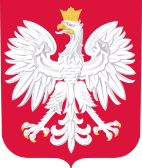REVIEWING ARTICLES
The Paper Selection of the article will be based on the list of topics and subtopics related to the conference. The registration form contains the title and a short summary prepared by the author, which is the basis for making the initial decision to accept the paper for further processing.
In the Peer Review first stage, articles will be checked for plagiarism. Plagiarism will be checked according to the procedures adopted at the Bydgoszcz University of Science and Technology. Bydgoszcz University of Science and Technology has a plagiarism detection system called Crossref Similarity Check. The system generates a report - SIMILARITY INDEX, indicating the similarity coefficient of the content in the article to other published scientific content. The University of Science and Technology in Bydgoszcz has adopted a threshold similarity coefficient of 30%. Above this coefficient, the article is rejected. Below this coefficient, the article is analyzed for similarities in content structure (e.g., amount of proper nouns, citations). Based on the analysis, a decision is made to accept or reject the article. The accepted article will be sent back to the author for correction of similar content. Ultimately, after the corrections, the similarity coefficient cannot exceed about 10% (excluding bibliography). It is assumed that about 10% or less is a positive result in terms of plagiarism. It should be noted that plagiarism assessment is a subjective and individual assessment.
After passing the plagiarism check, the accepted article will be subjected to review. Two reviewers selected from the Scientific Committee of the conference or from the group of scientists dealing with the issues described in the article will review the article. The appropriate evaluation sheet can be downloaded from the conference website in the Conference Details section. From this point on, the organizers adhere to the provisions contained in the article evaluation sheet. Reviewers have access to the plagiarism report. Depending on the reviewers' opinions, the article is accepted, requires minor revisions, requires major revisions and re-review, or is rejected. In the case of one positive and one negative review, a third reviewer will be asked to review the article.
Positive final reviews from two reviewers result in the article being sent for publication. The accepted article will be checked for editorial correctness imposed by the publisher by the organizers.
 Poczta
Poczta
 USOSweb
USOSweb
 Znajdź pracownika
Znajdź pracownika
 Tłumacz
Tłumacz
 Вступна кампанія
Вступна кампанія


